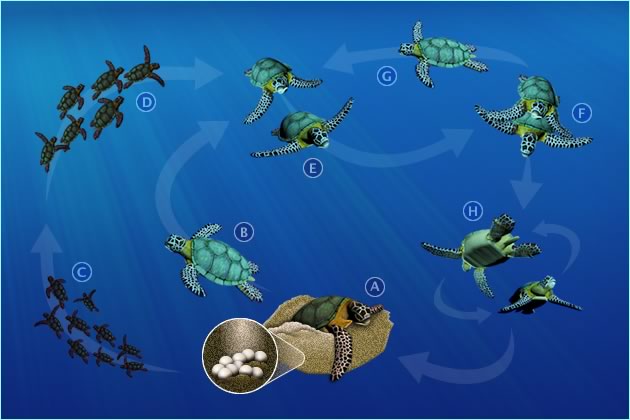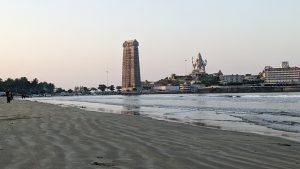The life cycle of Olive ridley sea turtles involves several stages, which are described below:
- Hatchling: Olive ridley sea turtles begin their life cycle as hatchlings, emerging from their eggs on the beach where they were laid. Hatchlings are typically around 1-2 inches long and weigh less than an ounce.
- Juvenile: After hatching, Olive ridley sea turtle hatchlings make their way to the ocean, where they spend the first few years of their life feeding on plankton and small invertebrates. During this time, they may travel thousands of miles and face a number of predators, including birds and fish.
- Adult: As they grow, Olive ridley sea turtles become more independent and move on to feeding on a wider range of prey, including jellyfish, crabs, and sea grass. Adult Olive ridley sea turtles may travel thousands of miles each year to mate and nest.
- Nesting: Olive ridley sea turtles are known for their mass nesting events, or arribadas, during which thousands of turtles come ashore to lay their eggs simultaneously. Females typically lay between 50 and 100 eggs in a nest, which they cover with sand before returning to the ocean.
- Incubation: Olive ridley sea turtle eggs take around 45 to 70 days to hatch, depending on the temperature of the sand. Warmer temperatures generally produce more females, while cooler temperatures produce more males.
- Emergence: When the eggs hatch, the hatchlings dig their way out of the sand and make their way to the ocean, where they begin their life cycle anew.
Throughout their life cycle, Olive ridley sea turtles face a number of threats, including habitat loss, climate change, pollution, and fishing gear entanglement. Conservation efforts are underway to protect these important creatures and ensure their survival for generations to come.
If you stay in Maharashtra, you will be able to witness baby olive ridley turtles at Velas village. Velas turtle festival is very famous in Maharastra tour.




